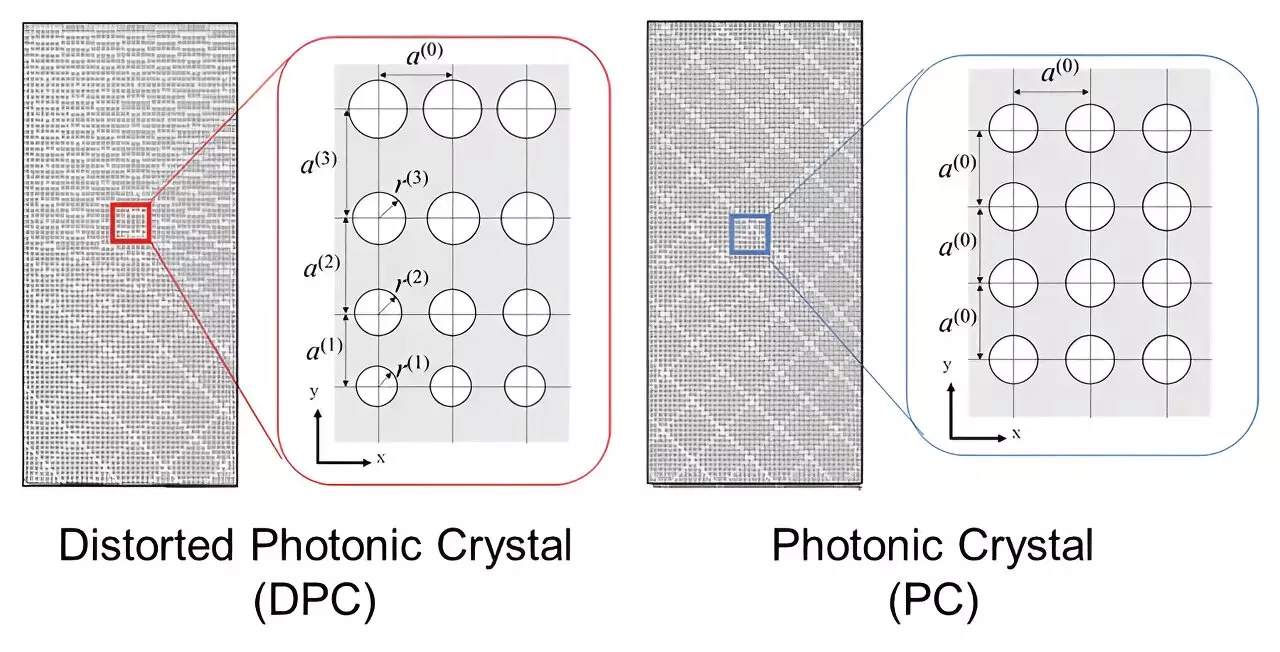In a groundbreaking discovery, a group of researchers has unlocked the ability to manipulate light as if it were subject to the forces of gravity. Published in the prestigious journal Physical Review A on September 28, 2023, this study holds immense promise for advancements in optics, materials science, and the future development of 6G communications. Expanding upon Albert Einstein’s theory of relativity, which established that gravitational fields can deflect electromagnetic waves, scientists have now theorized that it is possible to replicate these effects of gravity, known as pseudogravity, by distorting photonic crystals.
Photonic crystals, known for their unique properties, have become a pivotal tool in controlling and manipulating the behavior of light. Acting as “traffic controllers” for light within crystals, photonic crystals consist of a regular pattern of two or more materials with varying abilities to interact with and slow down light. Recent studies have observed pseudogravity effects resulting from adiabatic changes in photonic crystals.
To delve deeper into this realm of possibilities, Professor Kyoko Kitamura and her colleagues from Tohoku University’s Graduate School of Engineering embarked on a journey to explore whether lattice distortion in photonic crystals could induce pseudogravity effects. By introducing a gradual deformation of the regular spacing of elements, which disrupted the grid-like pattern of photonic crystals, they effectively modified their photonic band structure. This alteration caused light to follow curved trajectories within the crystal, simulating the bending of light in the presence of celestial bodies with high gravitational forces, such as black holes.
In their experiments, the researchers utilized a silicon distorted photonic crystal with a primal lattice constant of 200 micrometers and terahertz waves. Through this setup, they successfully demonstrated the deflection of these waves. Professor Kitamura highlights the significance of their findings, likening the bending of light within certain materials to the gravitational pull exerted on physical objects. The potential applications of such in-plane beam steering within the terahertz range are especially promising for the realm of 6G communications.
Associate Professor Masayuki Fujita from Osaka University sees the academic implications of this discovery reaching even further. Harnessing the gravitational effects of photonic crystals opens up new avenues in the field of graviton physics. This breakthrough not only has the potential to revolutionize the way we manipulate light, but it also offers a fresh perspective on the fundamental understanding of the interactions between light and gravity.
The manipulation of light as if it were under the influence of gravity represents a paradigm shift in the field of optics and materials science. This pioneering research into pseudogravity effects in photonic crystals paves the way for innovations in light-based technologies, with particular relevance to 6G communications. As scientists continue to unravel the mysteries of light and the intricate connections it shares with gravity, humanity edges closer to a future where the bending of light becomes an everyday reality.



Leave a Reply